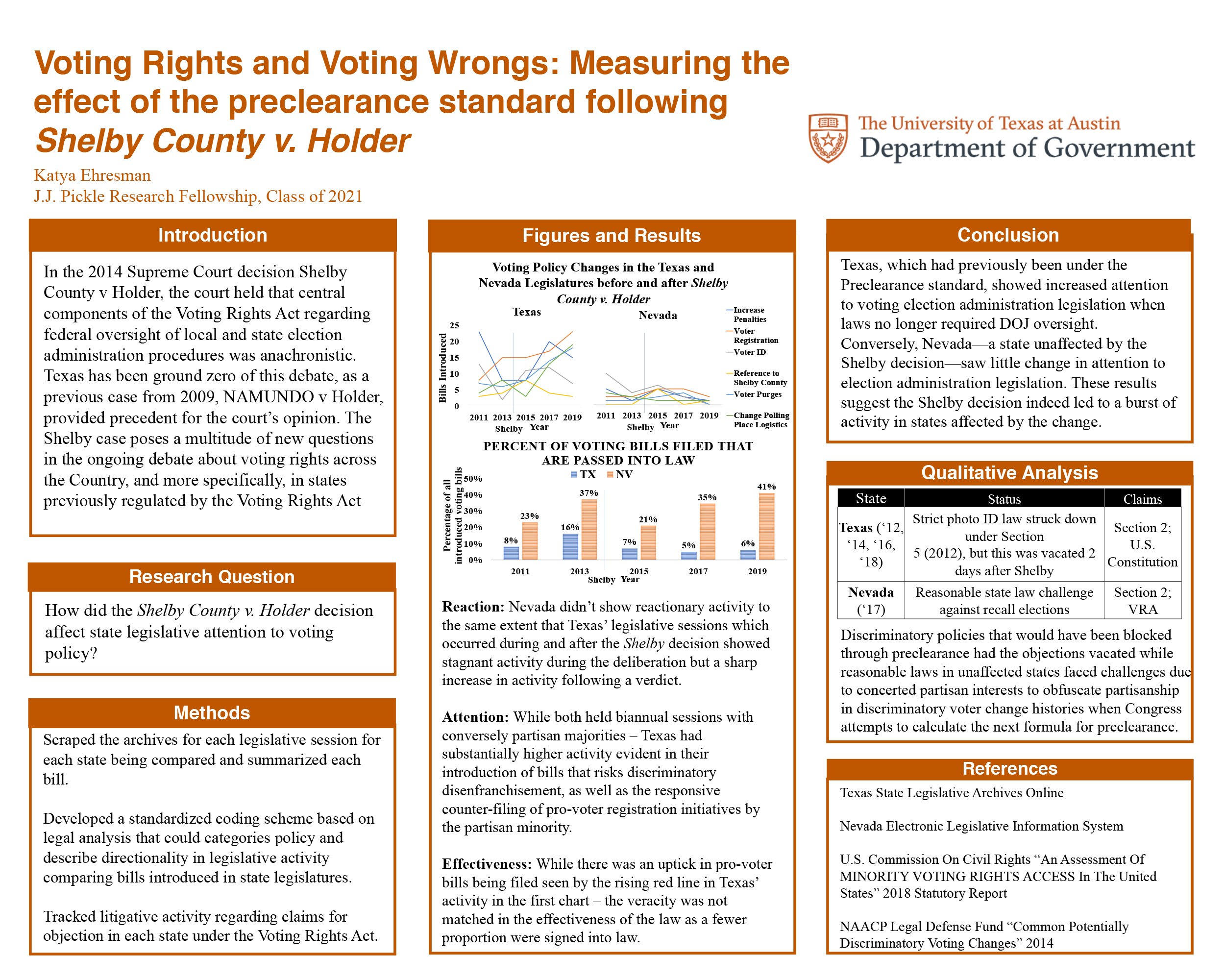Katya Ehresman
In 2013, the Supreme Court decision Shelby County v. Holder was described as the nation’s largest regression of voting rights policy in modern history. The sections of the Voting Rights Act (VRA) eliminated in the decision were those that established a preclearance standard intent to limit the power of jurisdictions with a history of pervasive voter suppression from filing voter changes without preclearance by the Department of Justice. The Court held that it was impermissible to treat states differently based on old data and declared the limiting done by the preclearance standard unconstitutional (Olds 2017). However, 2006 Congressional reports note that pervasive racially polarized voting in places under the preclearance formula occurred at a higher rate than those uncovered (Engstrom 2015). Currently the only data documents the initial increase in discriminatory voter laws in the immediate year following Shelby (Lopez 2014), but doesn’t provide a comparative analysis with control states outside of the preclearance jurisdiction to see if the activity was similar to national trends or a reactionary measure to the removal of oversight. By creating original data on the activity of state legislatures in Texas and Nevada, two states who were and were not under the preclearance formula respectively, I demonstrate the effectiveness of the preclearance standard is illustrated by the intentional increase of discriminatory voting changes following the removal of the preclearance oversight that didn’t correlate with national trends. My findings indicate heightened activity in these policy trends that demonstrate a causal relationship and attitudinal trend that would have been stopped by DOJ objections.

Comments
I’m very glad you were able to share this research — it’s an important topic, and it’s striking to see these pre/post changes quantified like this. —Rob Reichle
Very timely poster. I am especially interested to see research on voter ID laws and voter suppression. —Megan Offsie

